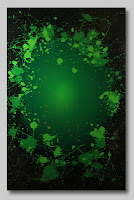For example, when my wife Kathleen and I visited Glen Rose, a tiny town of west of Fort Worth, we not only discovered the Fossil Rim Wildlife Center with 30-million-year-old fossils exposed on the ground and giraffes, zebras and other large animals who ate from our hands, in the town itself was Barnard's Mill and Art Museum, a 150-year old restored mill that houses what may be the most important collection of American western art in the world.
Texas is like that. Hidden treasures. To find them you must seek them.
Recently we discovered another hidden treasure. Accompanying my wife as she researched an article about what she calls the "Texas Hill Country Open-Air Sculpture Trail," we discovered the Benini Galleries and Sculpture Ranch, a 140-acre property that used to be part of Lyndon Johnson's ranch.
 |
| Entrance - Benini Galleries and Sculpture Ranch |
At the center of this remarkable arts destination is Benini (known only by that name), who has been painting for more than 60 years and whose works have been shown in over 160 one-man exhibitions world-wide.
When Kathleen and I showed up one morning to see the sculptures, Benini was there to greet us. He and I began to talk, and I found him so interesting that I opted to continue the conversation rather than tour the outdoor gallery.
As a painter, he has put in his 10,000 hours many times over. He was born in Italy and by the age of seven he began painting in watercolors and has continued painting ever since. A fiercely independent spirit, as a teenager he left the Catholic church and his home to travel around Italy, subsisting on works he painted in public places. In the winter he worked menial jobs and continued his development by copying the masters in museums. In his twenties he found work with the Alpine ski patrol and a cruise ship. When the ship reached the Bahamas, he decided to take up residence, where he painted nudes and island life. In his thirties, he moved to central Florida and became a sensation by painting symbolic roses in an ultra-realistic style on very large canvases.
He became a focus for an art in Florida, but then he sought a more compatible environment in which to work, and he and his new wife Lorraine moved to Hot Springs, Arkansas. During the 1990s, Benini's love of the arts and his desire to encourage it stimulated new interest in art in Arkansas. For Benini, art always trumps the business of art, which is why he exhibits only in one-man shows and public institutions - never private galleries. Even today he doesn't expect artists to remit a percentage from the works sold at his ranch.
When he once again felt the need to escape the distractions of attention, they moved to an isolated spot in the Texas Hill Country, which reminded him of the terrain of Italy. Once again, his fame and willingness to promote the careers of his colleagues have created a center of activity, which today is beginning to encroach on his ability to focus on his art.
This history of moving to new venues reveals a spirit that requires the freedom to focus on his work. And not just freedom from distractions - freedom from people who try to define him and guide him to produce certain kinds of work. Neither follower nor leader, for four decades he has refused to be a part of the mainstream art scene, with its art movements, dealers, agents, critics and others who would try to pigeonhole him. Twenty years ago, when he sensed that people were calling him "the rose artist," he stopped painting roses altogether.
 |
| Benini - "Forbidden Love" |
I was taken off-guard by the impact of his paintings, partially because I usually prefer more representational art. I love art that offers up images from a recognizable world and helps me understand a new perspective of it. But as I said, Benini is impossible to pigeonhole. Today he paints highly subjective nonrepresentational subjects he calls "Courting Kaos."
 |
| Benini - "Face of God" |
Since his father introduced him to speed-reading at the age of ten, Benini has been a voracious reader and lifelong learner. He showed me his personal library, which exceeds 18,000 volumes. He claims to read a book every day of his life. Since painting in acrylics requires temperatures in the 50s, he paints at night, sleeping only four hours a day.
As I said, he's a remarkable man who has produced a remarkable body of work, and this treasure is hidden in a remote part of the Texas Hill Country. He's invited us to visit again soon, so maybe this time I'll get a chance to walk around the property and see the other sculptures. Or maybe not, if Benini and I get caught up in another stimulating conversation.
Post by Dennis E. Coates, Ph.D., Copyright 2012. Building Personal Strength .

No comments:
Post a Comment